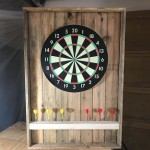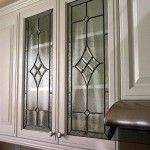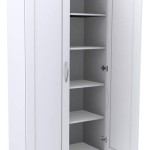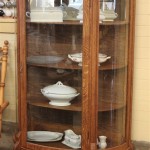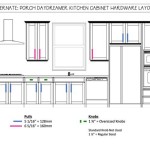Cabinet Knob Placement Shaker: A Guide to Achieving Perfect Alignment and Functionality
When it comes to Shaker-style cabinetry, the placement of knobs is not just a matter of aesthetics but also functionality. Properly positioned knobs enhance the usability of your cabinets and drawers, making them more accessible and convenient to open and close. In this comprehensive guide, we will delve into the essential aspects of cabinet knob placement Shaker, providing you with the knowledge and insights to achieve perfect alignment and functionality.
1. Understanding the Basics of Knob Placement Shaker
The key to successful cabinet knob placement Shaker lies in understanding the fundamental principles that govern the process. These principles include:
- Knob Centerline: The knob centerline refers to the imaginary vertical line that passes through the center of the knob. This line should align with the center of the drawer front or cabinet door.
- Door and Drawer Thickness: The thickness of the door or drawer front plays a crucial role in determining the ideal knob placement. Thicker doors and drawers may require longer screws or spacers to ensure the knobs are securely attached.
- Knob Projection: The knob projection refers to the distance between the face of the door or drawer and the outermost point of the knob. This measurement affects the overall look and accessibility of the knobs.
2. Determining the Ideal Knob Placement Height
The ideal knob placement height is a matter of both ergonomics and aesthetics. Here are some guidelines to help you determine the perfect height:
- Standard Height: For most cabinets and drawers, the standard knob placement height is approximately 2-1/2 inches (6.25 cm) from the top edge of the drawer front or cabinet door.
- Ergonomics: Consider the height of the user and the intended use of the cabinet or drawer. For taller individuals or cabinets that are mounted higher, you may need to adjust the knob placement height accordingly.
- Visual Balance: Strive for visual balance when placing the knobs. The knobs should be positioned in a way that complements the overall design and proportions of the cabinet or drawer.
3. Horizontal Knob Placement and Spacing
Horizontal knob placement and spacing are equally important in achieving a cohesive and functional design.
- Horizontal Alignment: Knobs should be horizontally aligned to create a uniform and visually pleasing arrangement. This means that the knob centerlines should be perfectly aligned across all doors and drawers within a cabinet.
- Spacing: The spacing between knobs should be consistent and sufficient to allow for comfortable use. A good rule of thumb is to maintain a spacing of at least 2 inches (5 cm) between adjacent knobs.
4. Considerations for Special Applications
In certain situations, you may need to make adjustments to the standard knob placement guidelines.
- Oversized Doors and Drawers: For oversized doors or drawers, you may need to use longer screws or spacers to ensure the knobs are securely attached.
- Glass Doors: When installing knobs on glass doors, use special glass-mounting hardware to prevent damage to the glass.
- Decorative Knobs: If you are using decorative knobs with unique shapes or designs, you may need to adjust the placement to accommodate their specific features.
5. Installation Tips for Perfect Knob Placement Shaker
To ensure a flawless knob placement Shaker installation, follow these tips:
- Use a Template: A template can be incredibly helpful in marking the precise locations for knob placement. You can create your own template or purchase one specifically designed for Shaker-style cabinets.
- Measure Twice, Drill Once: Before drilling any holes, double-check your measurements to ensure accuracy. Once you drill a hole, it is difficult to undo it.
- Use the Correct Hardware: Choose screws and spacers that are appropriate for the thickness of your doors or drawers. Using the wrong hardware can compromise the security and functionality of the knobs.
By following these guidelines and tips, you can achieve perfect alignment and functionality when installing cabinet knobs Shaker. Remember to consider the overall design, ergonomics, and intended use of the cabinetry to make informed decisions about knob placement. With careful planning and execution, you can create a cohesive and user-friendly cabinet system that enhances the functionality and aesthetics of your home.

Shaker Cabinet Hardware Placement Guide Use Pulls Knobs Correctly Modern Kitchen Cabinets Design Renovation

Cabinet Hardware Placement Guide For Shaker Cabinets

How To Place Cabinet Knobs Pulls
Cabinet Hardware Placement Where To Put Knobs And Handles Vevano

Learn How To Place Kitchen Cabinet Knobs And Pulls Cliqstudios

How To Install Handles And Knobs On Shaker Drawer Fronts True Position Tools

How To Choose The Best Cabinet Hardware Size And Placement Paddington

How To Properly Execute Cabinet Hardware Placement Van Dyke S Rers

Cabinet Hardware Placement Guide For Shaker Cabinets

Best Hardware For White Shaker Cabinets Lily Ann
Related Posts

